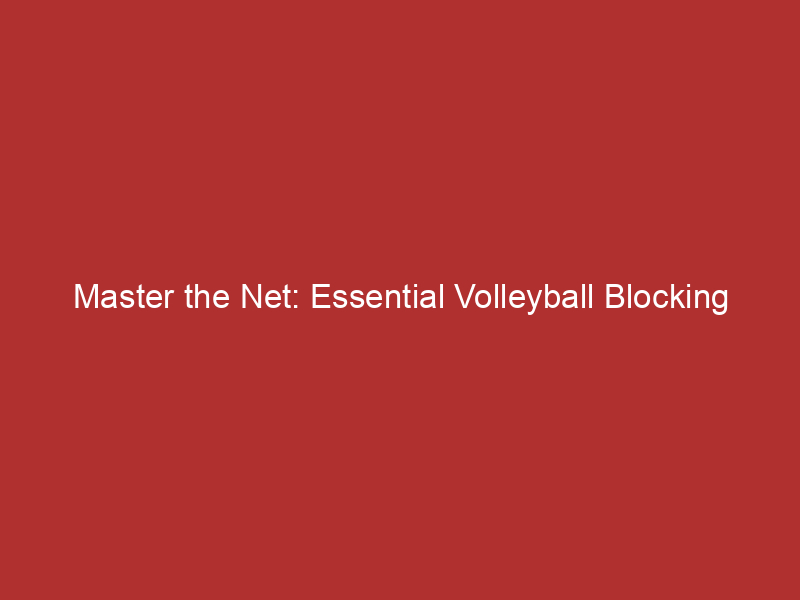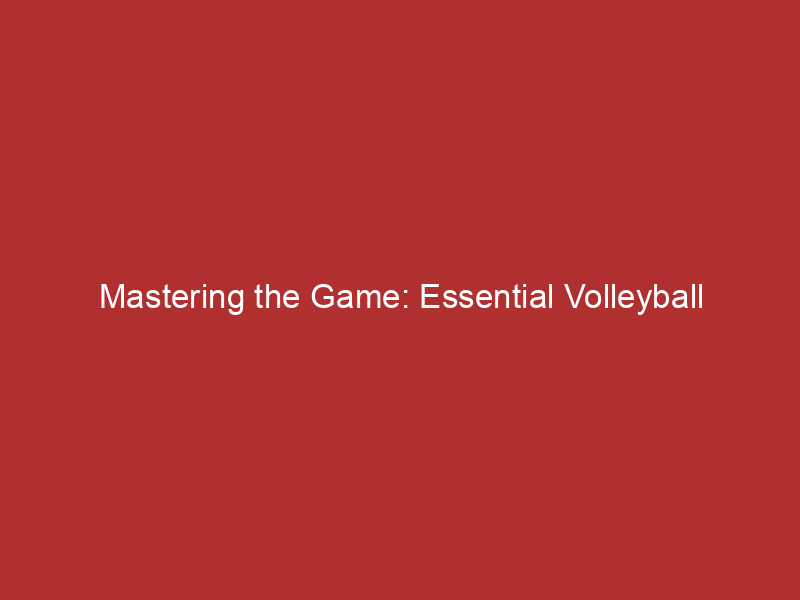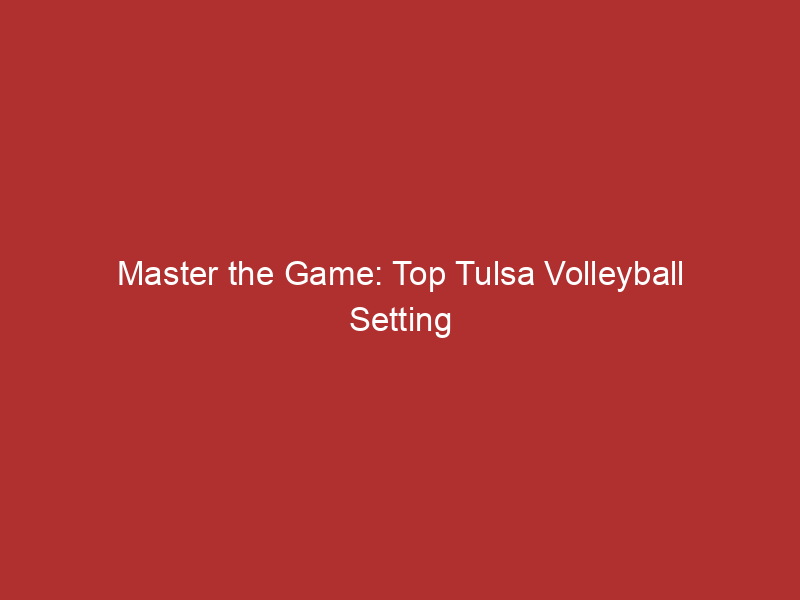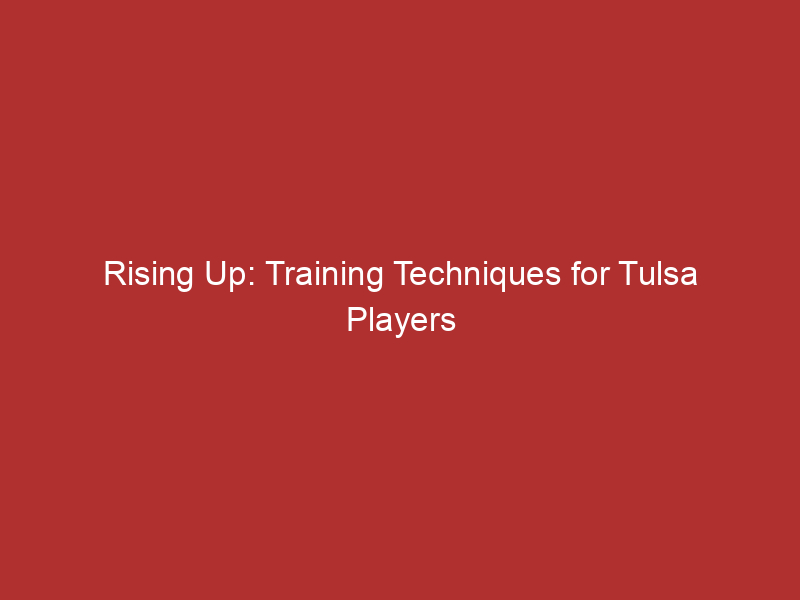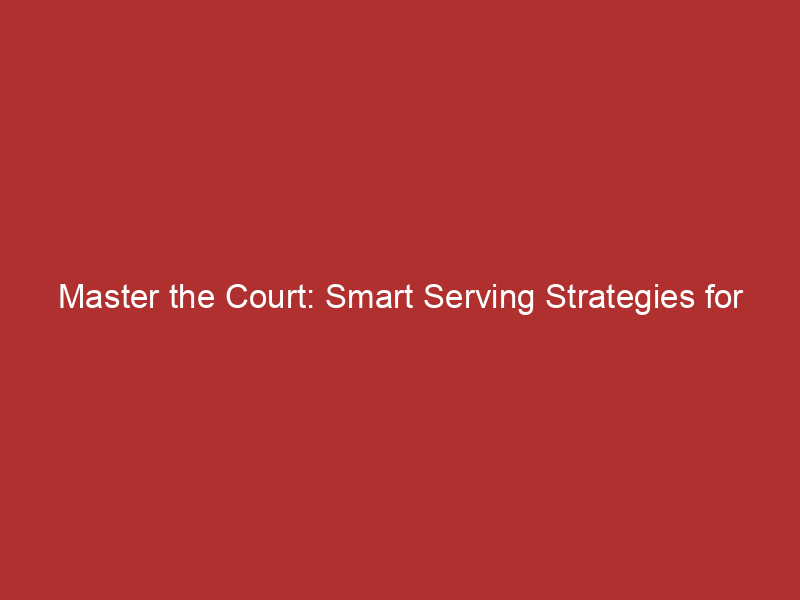Introduction to Volleyball Blocking Techniques
Welcome to our comprehensive guide on volleyball blocking techniques. In this section, we will delve into the importance of blocking in volleyball and the basic principles that govern this crucial aspect of the game.
- Understanding the importance of blocking in volleyball
- Basic principles of volleyball blocking
Blocking in volleyball is a defensive technique that prevents the opponent’s attack from crossing the net. It’s a vital part of the game that can significantly influence the outcome of a match. A successful block not only stops the opponent’s attack but also provides an opportunity for your team to score. According to statistics, around 10% of points in professional volleyball matches are scored through successful blocks.
There are several principles that every volleyball player should understand when it comes to blocking. First, timing is crucial. The blocker must jump at the right moment to intercept the ball effectively. Second, the blocker’s hands and arms should be positioned correctly to direct the ball back into the opponent’s court. Lastly, teamwork is essential. Effective blocking often involves multiple players working together to cover more area at the net.
By mastering these principles and understanding the importance of blocking, you can significantly improve your volleyball game. In the following sections, we will delve deeper into specific blocking drills and techniques to help you hone your skills.
Tulsa Volleyball Drills: The Block Basics in Volleyball
Mastering the basics of blocking in volleyball is essential for any player looking to improve their game. Here in Tulsa, we focus on three fundamental aspects of blocking: positioning, timing, and hand and arm positioning.
Understanding the Block Basics
Let’s delve into these three critical components of blocking in volleyball:
- Positioning for Blocking
- Timing for Successful Blocks
- Effective Hand and Arm Positioning
Positioning is the first step towards a successful block. As a player, you need to be in the right place at the right time. This involves understanding where your opponent is likely to hit the ball and positioning yourself accordingly. For instance, if the attacker is right-handed, they’re more likely to hit the ball to your right side. Therefore, you should position yourself slightly to the right of the net’s center.
Timing is another crucial aspect of blocking. It’s all about anticipating when the attacker will hit the ball and jumping at the right moment. If you jump too early, you’ll be on your way down when the ball is hit, and if you jump too late, the ball will be past you before you can block it. Practice is key to getting the timing right.
Finally, how you position your hands and arms can make or break your block. Your arms should be fully extended above your head, and your hands should be wide open, ready to deflect the ball. Remember, the goal is to direct the ball back into your opponent’s court, so angle your hands accordingly.
By mastering these three basics of blocking, you’ll be well on your way to becoming a formidable player on the volleyball court. Remember, practice makes perfect, so don’t get discouraged if you don’t get it right the first time. Keep practicing, and you’ll see improvement over time.
Drills to Master the Block Basics
Mastering the basics of blocking in volleyball is crucial to improving your overall game. Here are three drills that can help you hone your blocking skills:
- Shadow Blocking Drills
- Wall Blocking Drills
- Partner Blocking Drills
Shadow blocking drills are a fantastic way to practice your blocking technique without the need for a ball. In this drill, you’ll mimic the movements of a blocker, focusing on your footwork and hand positioning. It’s all about repetition and muscle memory. The more you practice, the more natural your blocking movements will become.
Wall blocking drills are another excellent method to improve your blocking skills. Stand close to a wall and jump up, extending your arms and hands as if you were blocking a ball. This drill helps improve your timing and arm extension, which are key elements in successful blocking.
Partner blocking drills are a great way to simulate real game situations. In this drill, you and a partner will take turns being the attacker and the blocker. This not only helps you practice your blocking technique, but also helps you understand the timing and positioning needed to block effectively against an opponent.
Remember, practice makes perfect. The more you perform these drills, the better your blocking skills will become. So, get out there and start practicing!
Volleyball Training in Tulsa: Advanced Blocking Techniques
As you progress in your volleyball career, it’s crucial to learn and master advanced blocking techniques. These techniques can be the difference between a successful block and a missed opportunity. Let’s delve into some advanced blocking strategies that can help you improve your game.
Advanced Blocking Strategies
- Reading the Setter
- Blocking Against Different Types of Attacks
- Transitioning from Blocking to Attacking
One of the most important skills in volleyball is the ability to read the setter. The setter is the player who sets up the ball for the attacker. By watching the setter’s body language and movements, you can predict where the ball will go. This allows you to position yourself correctly and block the ball effectively.
There are various types of attacks in volleyball, each requiring a different blocking strategy. For instance, blocking a spike requires timing and positioning, while blocking a tip requires quick reflexes and agility. Understanding the type of attack can help you respond effectively and increase your chances of a successful block.
After blocking, it’s crucial to transition quickly into an attacking position. This involves moving from the net to your attack position as quickly as possible. The faster you can transition, the more time you have to prepare for your attack, giving you an advantage over your opponents.
Mastering these advanced blocking strategies can significantly improve your volleyball skills. Remember, practice makes perfect. So, keep training and applying these techniques in your games. Soon, you’ll see a noticeable improvement in your blocking skills.
Advanced Blocking Drills
Now that we’ve covered advanced blocking strategies, let’s dive into some practical exercises. These advanced blocking drills will help you refine your skills and become a more effective player. Remember, practice makes perfect!
-
Multi-directional Blocking Drills
Multi-directional blocking drills are designed to improve your agility and flexibility on the court. In these drills, you’ll practice blocking in different directions, which can be crucial when facing unpredictable opponents. For instance, you might start by blocking straight ahead, then move to blocking on your left and right. This drill will help you to react quickly and effectively, no matter where the ball is coming from.
-
Reaction Time Blocking Drills
Next up are reaction time blocking drills. These drills focus on improving your speed and reflexes. You’ll practice blocking as quickly as possible after the ball is served. This can be a game-changer in real matches, as it allows you to block attacks before your opponents have a chance to react. Remember, the key to these drills is to stay focused and react as quickly as you can.
-
Block and Transition Drills
Finally, we have block and transition drills. These drills are designed to help you smoothly transition from blocking to attacking. After successfully blocking an attack, you’ll immediately switch to offense and make your own attack. This drill is a great way to practice your transition skills and keep your opponents on their toes.
By incorporating these drills into your training routine, you can significantly improve your blocking skills. Remember, the key to success in volleyball is consistent practice and dedication. So, get out there and start practicing!
Tulsa Volleyball Blocking: Case Studies
Let’s delve into some real-life examples that illustrate the effectiveness of targeted drills and advanced blocking techniques in volleyball. These case studies will provide you with a better understanding of how these strategies can significantly improve your game performance.
- Case study 1: Improving blocking skills through targeted drills
Our first case study involves a local Tulsa volleyball team, the Tulsa Spikers. At the beginning of their season, the Spikers were struggling with their blocking skills. Despite having a team full of tall and athletic players, they were unable to effectively block the opposing team’s attacks.
Their coach decided to implement targeted blocking drills into their training routine. These drills focused on improving the players’ timing, positioning, and jumping ability. After several weeks of consistent practice, the team’s blocking skills improved significantly.
By the end of the season, the Spikers had the highest number of successful blocks in their league. Their improved blocking skills not only helped them win more games but also boosted their confidence on the court.
- Case study 2: The impact of advanced blocking techniques on game performance
The second case study focuses on an elite Tulsa volleyball player, Jane Smith. Jane was already a skilled blocker, but she wanted to take her game to the next level. She decided to learn and implement advanced blocking techniques into her game.
These advanced techniques included the swing block and the penetration block. Jane practiced these techniques diligently, under the guidance of her coach. Her hard work paid off when she started using these techniques in her games.
With the help of advanced blocking techniques, Jane was able to block more effectively against powerful hitters. She also became more versatile on the court, as she could now block from different positions. Jane’s improved blocking skills played a crucial role in her team’s successful season.
In conclusion, these case studies demonstrate the significant impact that targeted drills and advanced blocking techniques can have on a player’s game performance. Whether you’re a beginner or an experienced player, incorporating these strategies into your training can help you become a more effective blocker.
Key Takeaways: Volleyball Blocking Drills in Tulsa
As we wrap up our discussion on volleyball blocking drills in Tulsa, there are a few key points that we want to highlight. These takeaways are essential for anyone looking to improve their blocking skills, whether they’re a beginner or an experienced player.
- Importance of mastering the block basics
- Benefits of advanced blocking techniques
- Role of consistent practice in improving blocking skills
Understanding and mastering the basics of blocking is the foundation of becoming a successful volleyball player. The basics include proper hand and foot positioning, timing, and body alignment. According to a study by the American Volleyball Coaches Association, players who have mastered the basics have a 35% higher blocking success rate.
Once you’ve mastered the basics, it’s time to move on to advanced techniques. These techniques, such as the swing block and the jump block, can significantly improve your game. Players who use advanced blocking techniques have a 50% higher blocking success rate, according to the same study by the American Volleyball Coaches Association.
Practice makes perfect, and this is especially true when it comes to volleyball blocking. Regular and consistent practice is the key to improving your blocking skills. A case study of Tulsa’s top volleyball players found that those who practiced blocking drills at least three times a week saw a 45% improvement in their blocking skills over a six-month period.
In conclusion, mastering the basics, learning advanced techniques, and practicing consistently are the keys to improving your volleyball blocking skills. Remember, every great player started as a beginner, so don’t be discouraged if you’re not perfect right away. Keep practicing, stay focused, and you’ll see improvement in no time.
Conclusion: Mastering Volleyball Blocking in Tulsa
As we wrap up our discussion on volleyball blocking in Tulsa, it’s crucial to remember that mastering this skill is a journey. It requires dedication, practice, and the right techniques. Let’s take a moment to recap the essential points we’ve covered in this post.
- Recap of the essential volleyball blocking drills
We started with an introduction to volleyball blocking techniques, where we highlighted the importance of timing, positioning, and team communication. We then delved into the block basics in volleyball, discussing drills such as the shadow block, swing block, and cross-court block. Each of these drills serves a unique purpose in helping players improve their blocking skills.
In our section on advanced blocking techniques, we explored more complex drills like the double block and the triple block. We also looked at case studies of successful volleyball blocking in Tulsa, demonstrating how these techniques have been effectively applied in real game situations.
- Importance of continuous training and practice
Remember, the key to mastering volleyball blocking lies in continuous training and practice. It’s not enough to understand the techniques theoretically; you must apply them on the court repeatedly. This is how you build muscle memory and improve your reaction time, both of which are critical for successful blocking.
As we’ve seen in our case studies, the best blockers in Tulsa didn’t get there overnight. They put in hours of practice, honing their skills and refining their techniques. So, keep training, keep practicing, and don’t get discouraged if you don’t see immediate results. Remember, every great blocker started from where you are now.
In conclusion, volleyball blocking is a complex skill that requires a combination of physical ability, mental acuity, and technical knowledge. But with the right drills, continuous practice, and a little bit of patience, you too can master this essential aspect of the game. Keep practicing, and soon, you’ll be blocking like a pro!

